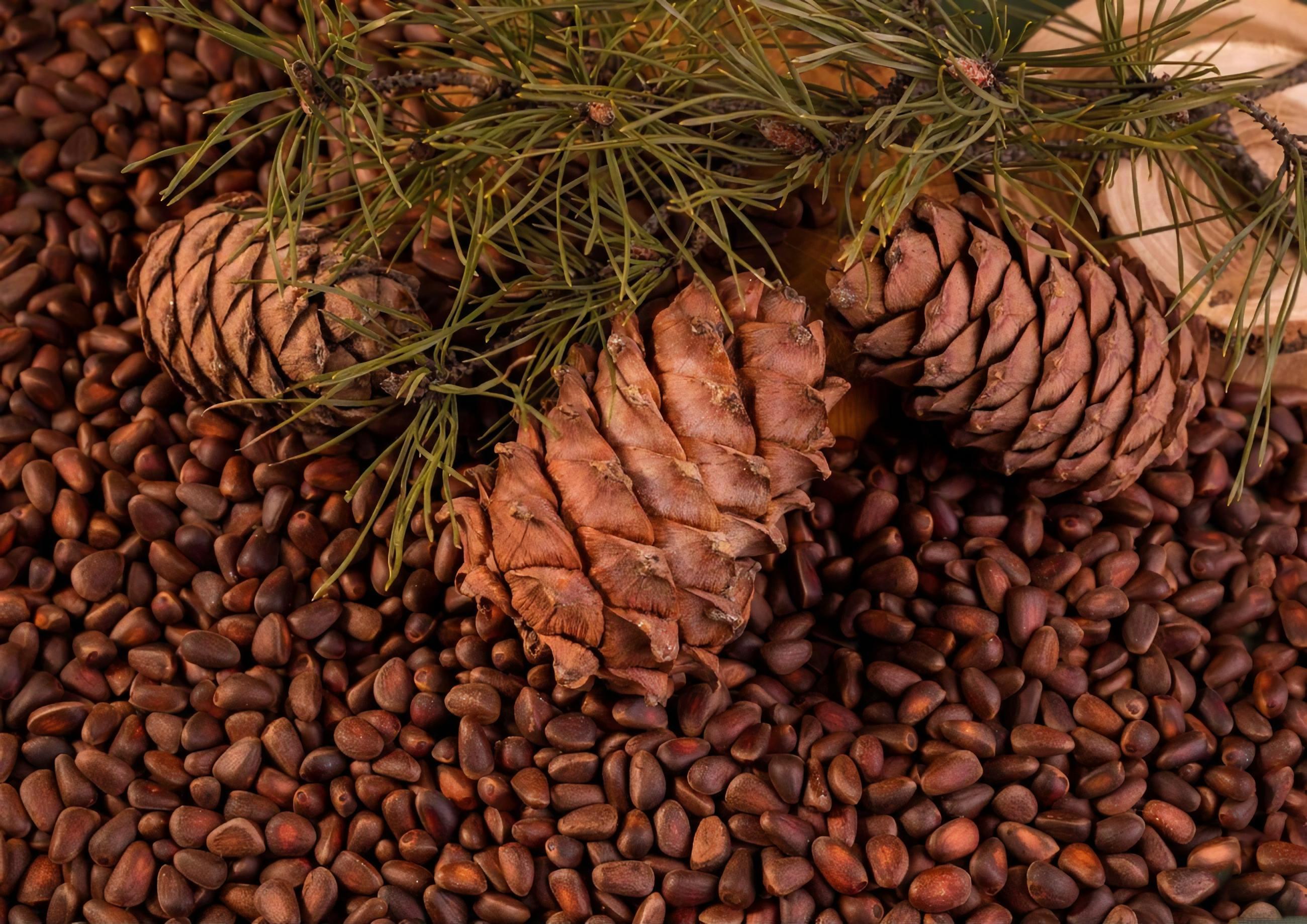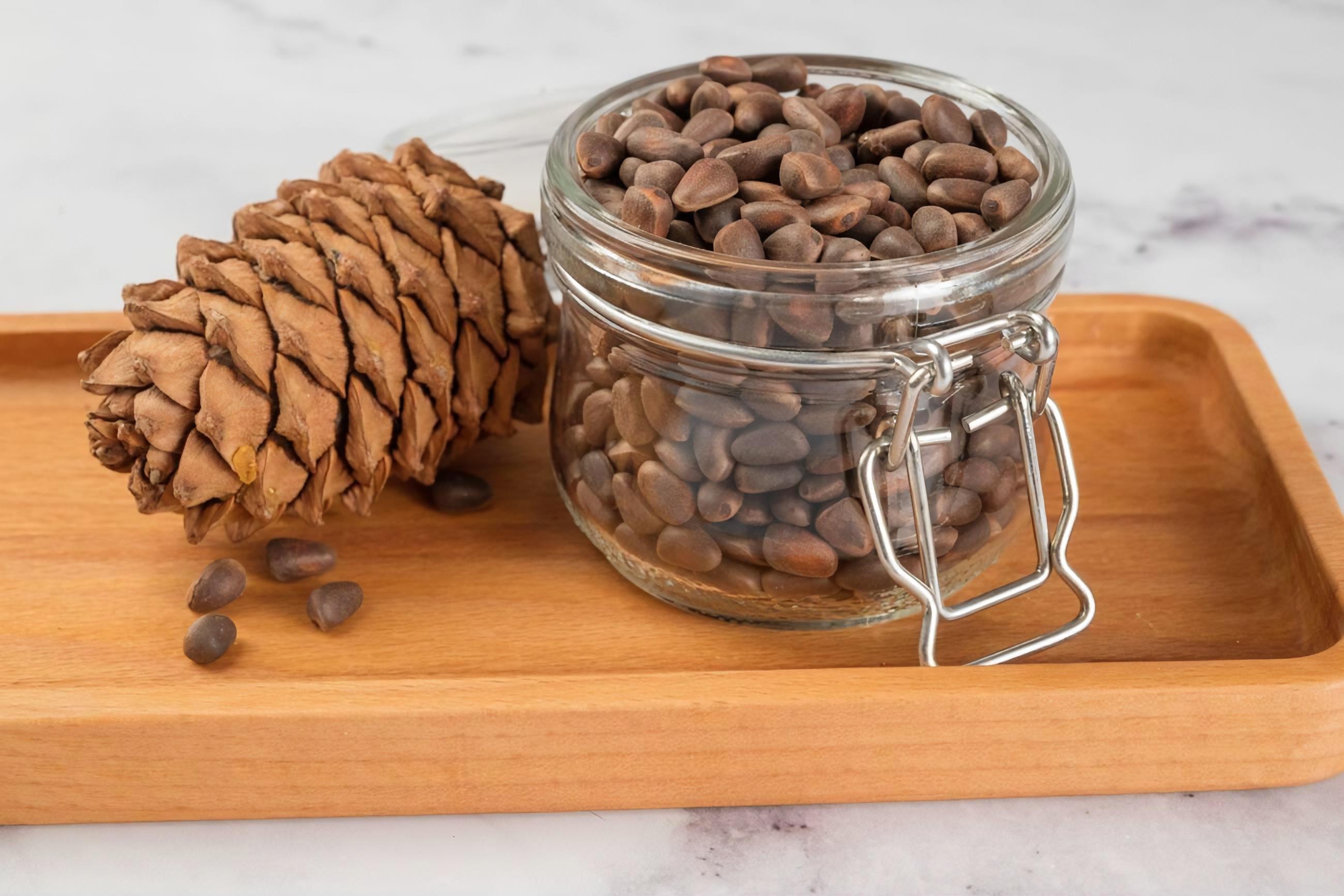The contents of this article are summarized from this source: https://eprints.soton.ac.uk/389615/1/__soton.ac.uk_ude_PersonalFiles_Users_lce_mydocuments_Eprints%20-%20Prof%20Calder_Xie%20et%20al%20Revised%20and%20corrected%20with%20figures.pdf
Siberian cedar oil, extracted from the nuts of Pinus sibirica, is gaining attention as a natural source of pinolenic acid (PNLA) — a unique fatty acid with science-backed health benefits. This oil contains up to 19-27% PNLA, making it one of the richest plant-based sources of this compound. Below, we break down how Siberian cedar oil delivers PNLA and its potential benefits for everyday health, explained in simple terms without skimping on the science.
What’s Special About Siberian Cedar Oil?
Siberian cedar oil is packed with PNLA, a rare type of fatty acid that’s hard to find in other foods. Here’s what makes it stand out:
- High PNLA content: Unlike other pine species (e.g., P. pinea), Siberian cedar oil contains 14-19% PNLA, which gives it unique anti-inflammatory and metabolic properties [1].
- Rich in healthy fats: Nearly 50% of its fatty acids are linoleic acid (an omega-6 fat linked to heart health), and 24% are oleic acid (a monounsaturated fat like that in olive oil) [1].
- Natural antioxidants: Tocopherols (vitamin E) and phytosterols in the oil help protect cells from damage [1].
Key Health Benefits of PNLA
1. Fights Inflammation
PNLA tackles chronic inflammation, a root cause of conditions like arthritis and heart disease:
- Reduces inflammatory signals: In lab studies, PNLA lowered key inflammation markers like IL-6 (by 71%) and TNF-α (by 27%) in immune cells [1].
- Eases pain and swelling: Rats given Siberian cedar oil saw 45% less swelling in inflamed joints and reduced fever [1].
- Human potential: Immune cells from arthritis patients produced 60% less TNF-α and IL-6 when treated with PNLA [1].
How it works: PNLA blocks proteins like NF-κB that trigger inflammation and activates pathways that calm the immune response [1].
2. Supports Heart Health
PNLA helps manage cholesterol and protects arteries:
- Lowers triglycerides: In animal studies, Siberian cedar oil reduced blood triglycerides by 26% [1].
- Reduces artery clogging: PNLA decreases absorption of oxidized LDL (“bad cholesterol”) by immune cells, slowing plaque buildup in arteries [1].
- Boosts “good” cholesterol: Enhances liver clearance of LDL particles, improving overall lipid profiles [1].
3. Aids Weight Management
PNLA may help control appetite and fat storage:
- Curbs hunger: Human trials showed PNLA increases cholecystokinin (CCK) and GLP-1—hormones that promote fullness. Participants ate 9-36% less after consuming PNLA-rich oil [1].
- Reduces fat gain: Mice fed Siberian cedar oil gained 17% less weight on high-fat diets, with less belly fat and healthier liver metabolism [1].
4. Balances Blood Sugar
PNLA improves insulin sensitivity, which is crucial for diabetes prevention:
- Mimics diabetes drugs: PNLA activates receptors (FFA1/FFA4) that enhance insulin secretion and glucose uptake [1].
- Animal evidence: Mice given PNLA had lower blood sugar spikes after meals [1].
5. Antioxidant Protection
Siberian cedar oil combats oxidative stress, which damages cells:
- Reduces free radicals: PNLA lowered oxidative stress in liver cells by 65.5% [1].
- Boosts natural defenses: Increases enzymes like superoxide dismutase (SOD) that neutralize harmful molecules [1].
How Siberian Cedar Oil Compares to Other Sources
- Sustainable choice: Unlike fish-derived omega-3s (which face overharvesting issues), Siberian cedar oil is plant-based and renewable [1].
- Higher PNLA than other pines: Oils from P. koraiensis (Korean pine) have slightly less PNLA (14-19%) compared to Siberian cedar’s 19-27% [1].
Safety and Practical Use
- No major side effects: Animal studies show no liver toxicity even at high doses [1].
- How to use: While optimal human doses aren’t confirmed, studies used 2-6 grams daily of PNLA-rich oil. Look for cold-pressed, unrefined Siberian cedar oil for maximum benefits.
- Pair with CLA: Combining PNLA with conjugated linoleic acid (CLA) may enhance fat loss while preventing CLA’s negative effects on insulin [1].
The Bottom Line
Siberian cedar oil’s high PNLA content offers a natural way to combat inflammation, support heart health, manage weight, and protect against oxidative stress. While more human trials are needed, existing research—from cells to animal models—suggests it’s a promising addition to a health-conscious lifestyle. For those seeking a sustainable alternative to fish oils, Siberian cedar oil is a science-backed option worth exploring.






Leave a comment
This site is protected by hCaptcha and the hCaptcha Privacy Policy and Terms of Service apply.